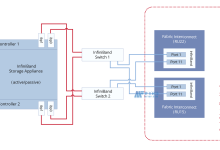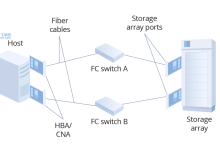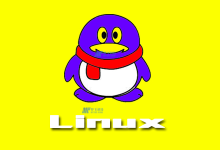Threads enable applications to maximize utilization of computing resources and increase throughput. Multithreaded applications, also known as multitasking, increase resource efficiency and provide application responsiveness by allowing processes to run concurrently. With the development of linux, executing and managing threads has become much easier. Mastering multithreaded applications with Linux is becoming increasingly important for the developers of today.
Starting with the basics, it’s important to understand how Linux enables applications to run concurrently. To achieve this, Linux takes advantage of a concept called preemptive multitasking. It works by dividing the CPU into multiple “time slices” and allowing multiple processes to work in parallel. Preemptive multitasking ensures that applications get their share of the processor cycles, allowing them to run in real time and making sure that the system remains responsive.
Next, it’s essential to learn how to write code which runs in multiple threads. This can be accomplished by using the POSIX Threads library (or pthreads). This library enables developers to write programs which can take advantage of multiple CPUs and manage different parallel parts of the the application independently. The library’s API can be used to create, control, coordinate, and manage threads.
Once developers have a grasp of the basics, they should move on to using higher-level constructs like mutexes and semaphores, or monitor-lock-based synchronization. These advanced synchronization methods are used when multiple threads have to access shared data, as it ensures that only one thread can access the data at any given time and prevents data corruption due to race conditions.
Finally, developers should familiarize themselves with thread scheduling, a technique used to decide which thread runs first and how much processor time each thread gets. By tweaking the scheduling parameters, developers can prioritize certain threads and minimize context-switching.
Mastering the basics of multithreaded applications is an essential skillset for developers of today who are aiming to get the best performance out of their applications. By learning the concepts of pre-emptive multitasking, pthreads, synchronization and thread scheduling with Linux, developers can create applications that can make maximum use of the available computing resources and deliver a better user experience.
“`c++
#include
// Make a thread:
pthread_t thread;
// Create a attribute object
pthread_attr_t attr;
// Initialize attribute object:
pthread_attr_init(&attr);
// Set thread to be joinable:
pthread_attr_setdetachstate(&attr, PTHREAD_CREATE_JOINABLE);
// Create a thread:
pthread_create(&thread, &attr, my_thread_function, NULL);
// Join a thread:
pthread_join(thread, NULL);
// Clean up attribute object:
pthread_attr_destroy(&attr);

 国外主机测评 - 国外VPS,国外服务器,国外云服务器,测评及优惠码
国外主机测评 - 国外VPS,国外服务器,国外云服务器,测评及优惠码









